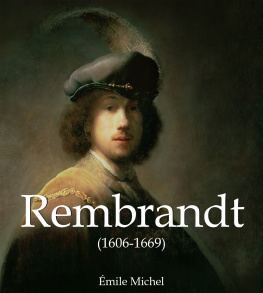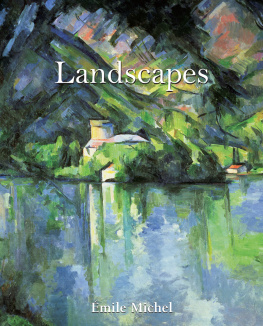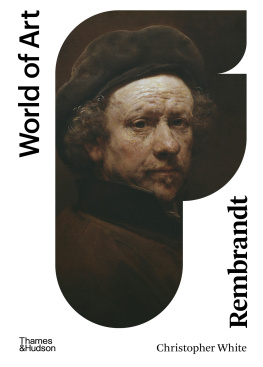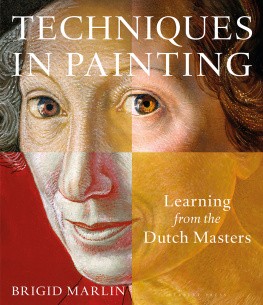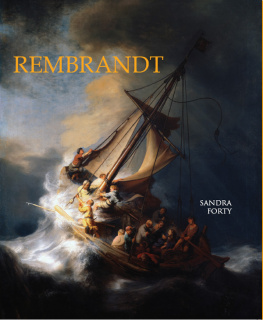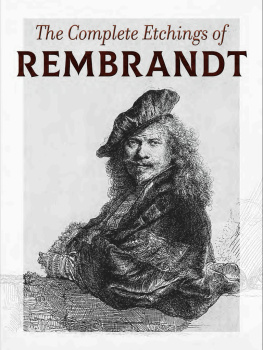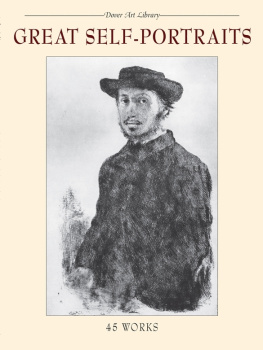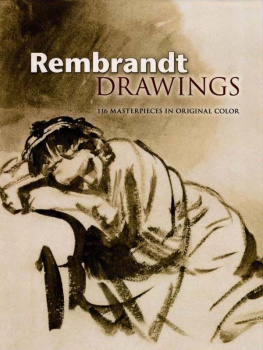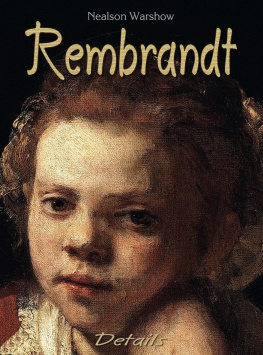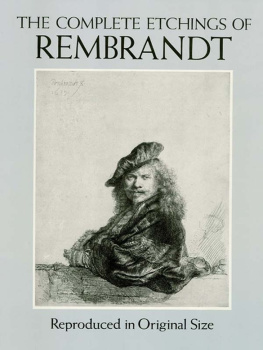Baseline Co. Ltd
All rights reserved.
No part of this publication may be reproduced or adapted without the permission of the copyright holder, throughout the world. Unless otherwise specified, copyright on the works reproduced lies with the respective photographers, artists, heirs or estates. Despite intensive research, it has not always been possible to establish copyright ownership. Where this is the case, we would appreciate notification.
Painting is the grandchild of nature. It is related to God.
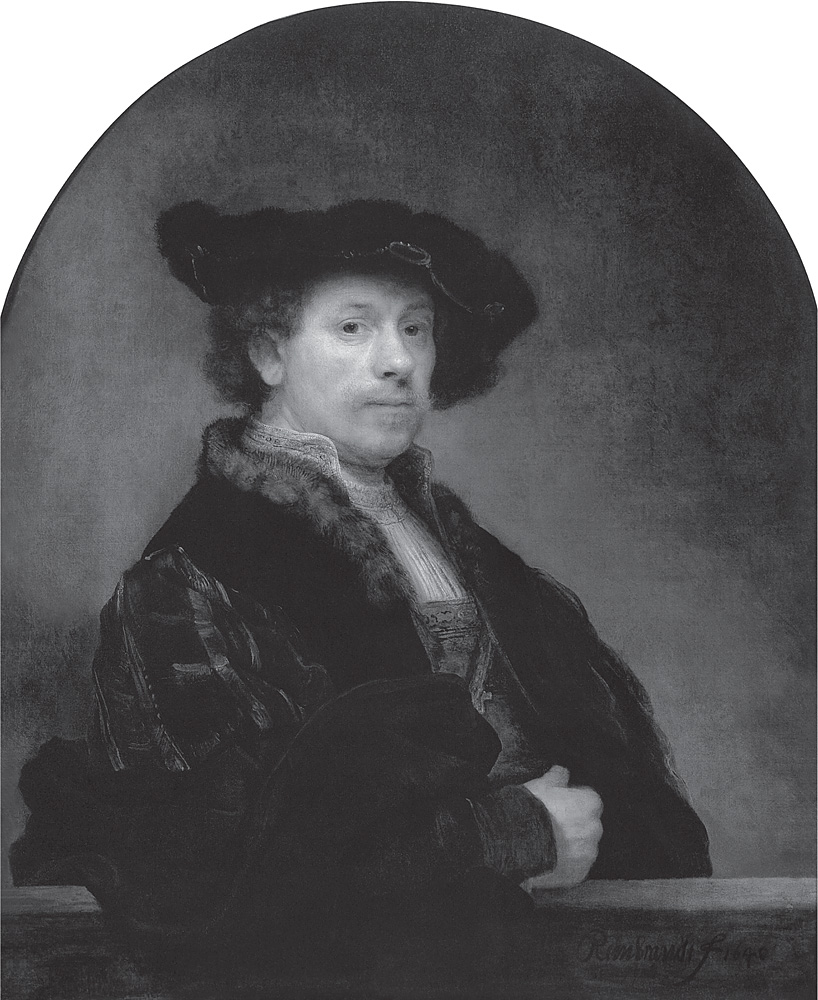
Self-Portrait at the Age of Thirty-Four, 1640
Oil on canvas, 102 x 80 cm. The National Gallery, London.
Biography
1606:Rembrandt Harmenszoon van Rijn was born on 15 July in Leyden.
1613-1620:Attended the Latin School in Leyden.
1621:Began an apprenticeship with Leyden-based painter Jacob van Swanenburgh.
1625:Studied for six months under the artist Pieter Lastman in Amsterdam.
Opened his own studio in Leyden and collaborated with his friend Jan Lievens.
Started to produce etchings.
1628:Rembrandt mentored his first pupils in his studio.
1631:Met famous Amsterdam art dealer Hendrick van Uylenburgh.
Moved to Amsterdam and became a successful portrait artist.
1632:First group portrait: The Anatomy Lesson of Dr Nicolaes Tulp.
1634:Married Saskia van Uylenburgh, the niece of successful art dealer Hendrick van Uylenburgh, on 22 June.
1635:Rembrandt and Saskia became parents to Rumbartus, who died after two months.
1638:Rembrandt and Saskia became parents to Cornelia, who died after three weeks.
1639:Rembrandt and Saskia purchased and moved into a house for 13,000 guilders on the Breestraat in Amsterdam.
He was commissioned to paint what would be known as The Nightwatch.
1640:Rembrandt and Saskia became parents to Cornelia, their second daughter, who died after one month.
1641:Rembrandt and Saskia became parents to Titus, their only child to live to adulthood.
1642:Completed The Nightwatch.
The death of Saskia, attributed to tuberculosis.
Geertje Dircx became the nursemaid of Titus and later Rembrandts mistress.
1647:Hendrickje Stoffels entered Rembrandts household as a servant and became his new mistress.
1654:Rembrandt and Hendrickje, now his common-law wife, became parents to a daughter, Cornelia.
1656:The High Court of Holland declared Rembrandt bankrupt.
1656-1658:The house on Breestraat and Rembrandts possessions were sold at a series of auctions.
1660:Moved to a small house on the Rozengracht.
Hendrickje and Titus became art dealers.
1663:The death of Hendrickje.
1668:The death of Titus.
1669:Rembrandt died on 4 October. He was buried in the Westerkerk, in an unmarked grave.

The Beginning of his Career
His Education
Rembrandt was born on 15 July 1606 in Leyden. No record of Rembrandts early youth has been discovered, but we may be sure that his religious instruction was the object of his mothers special care, and that she strove to instil into her son the faith and moral principles that formed her own rule of life. The passages she read, the stories she recounted to him from her favourite book, made a deep and vivid impression on the child, and in later life he sought subjects for his works mainly in the sacred writings.
Leyden offered few facilities for an art student during that period. Painting, after a brief spell of splendour and activity, gave way to science and letters. Rembrandts parents considered him too young to leave them, and decided that his apprenticeship should be passed in his native home. An intimacy of long standing, and perhaps some tie of kinship, determined their choice of master.
They fixed upon an artist, Jacob van Swanenburch, now almost all but forgotten, though greatly esteemed by his contemporaries.
Though Rembrandt could learn little beyond the first principles of his art from such a teacher, he was treated by Swanenburch with a kindness not always met with by such youthful probationers. During Rembrandts three years in his trust, his progress was such that all fellow-citizens interested in his future were amazed, and foresaw the glorious career that awaited him.
His noviciate over, Rembrandt had nothing further to learn from Swanenburch. Now being old enough to leave his fathers house, his parents agreed that he should go forth and strengthen his skill in a more advanced art-centre. They chose Amsterdam and master Pieter Lastman, a very well-known painter at that time. In his studio, methods of instruction much akin to those adopted by Swanenburch were in vogue, though the personal talent modifying them was of a far higher order.
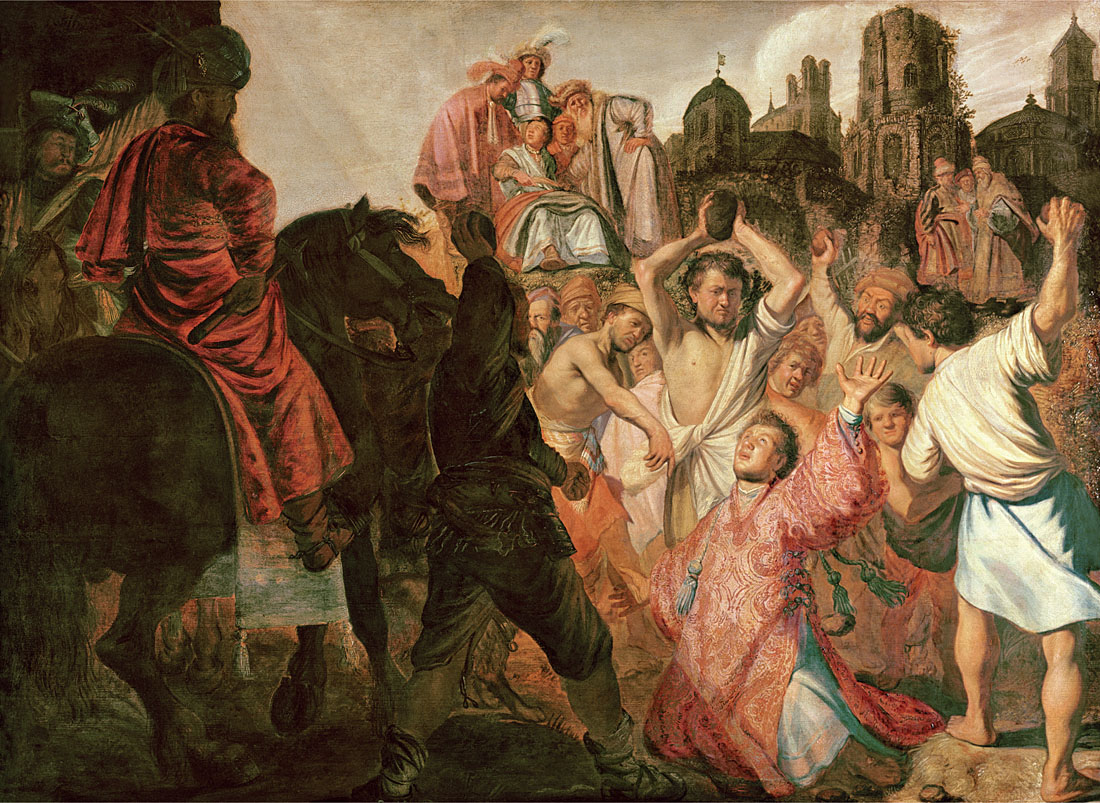
The Stoning of Saint Stephen, 1625
Oil on wood, 89.5 x 123.6 cm. Muse des Beaux-Arts, Lyon
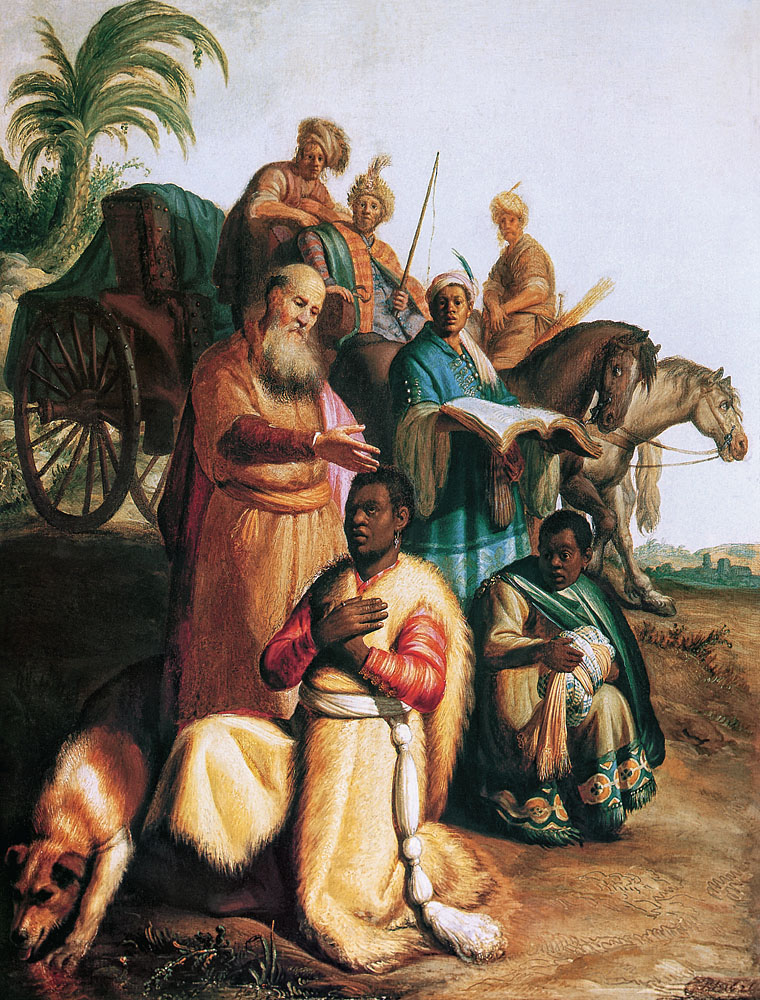
The Baptism of the Eunuch, 1626
Oil on wood, 63.5 x 78 cm. Rijksmuseum Het Catharijneconvent, Utrecht
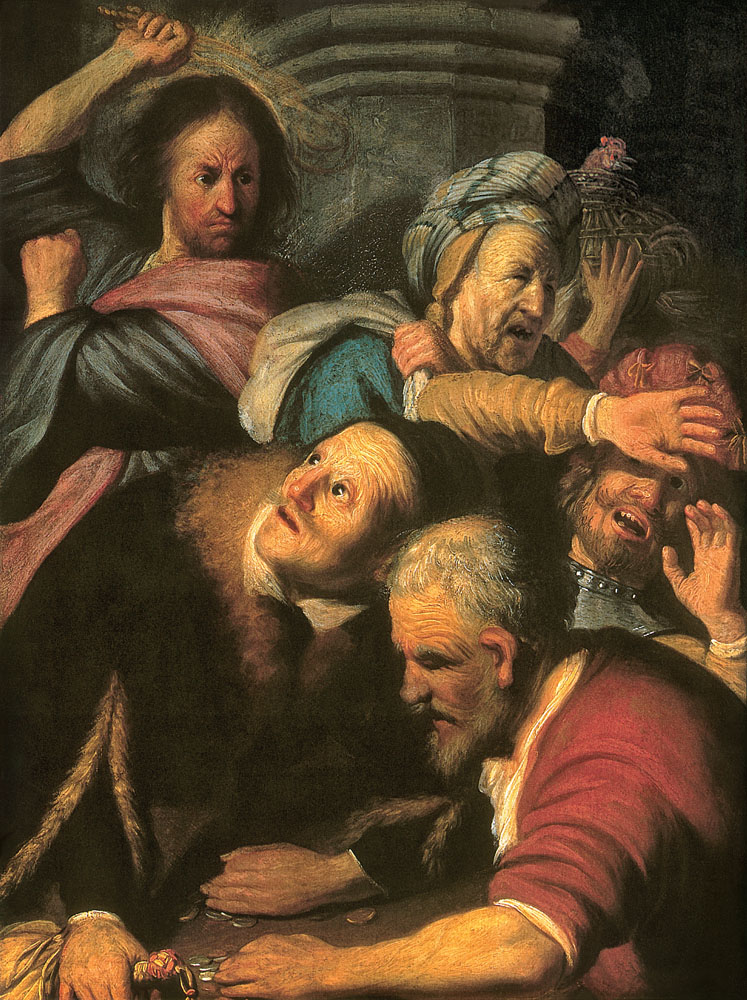
Christ Driving the Moneychangers from the Temple, 1626
Oil on wood, 43 x 32 cm. The Pushkin Museum of Fine Arts, Moscow
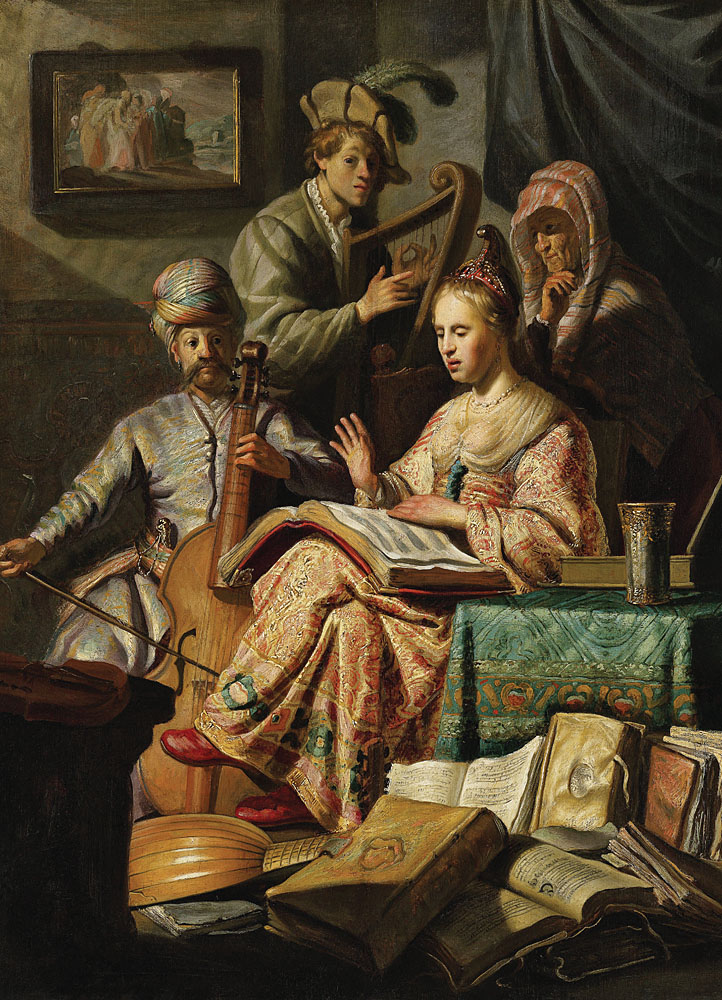
Musical Allegory, 1626
Oil on panel, 63.5 x 48 cm. Rijksmuseum, Amsterdam
First Works Done in Leyden
The return of one so beloved by his family as Rembrandt was naturally hailed with joy in the home circle. But happy as he was to find himself thus welcomed, he had no intention of living idly under his fathers roof, and at once set resolutely to work. He had thrown off a yoke that had become irksome to him. Henceforth he had to seek guidance from himself alone, choosing his own path at his own risk. Amidst the evidence of youthful inexperience in these somewhat hasty works, we note details of great significance.
Saint Paul in Prison is dated 1627 and signed with his particular signature and monogram of that period. On examining the pale sunbeam, the serious countenance of the meditation, and Saint Paul pausing, pen in hand, to find the right expression for his thought, his earnest gaze and contemplative attitude, we recognise something beyond the conception of a commonplace beginner. We discern evidence of careful observation which Rembrandt in the full possession of his powers would have turned to higher account; but even with the imperfect means at his command, comes a striking effect. The patient and accurate execution of accessories such as the straw, the great iron sword, and the books by the apostles side, betokens a conscientious artist, who had applied to Nature for such help as she could give him.

